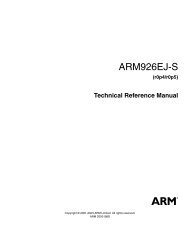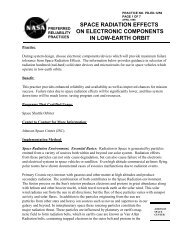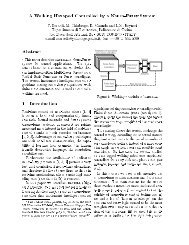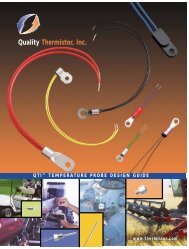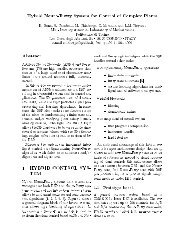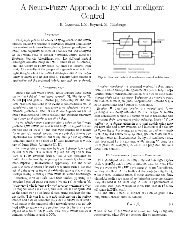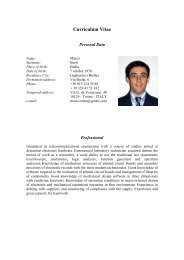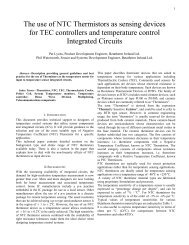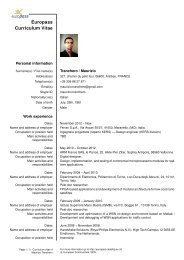Single-Chip Low Cost Low Power RF-Transceiver (Rev. B
Single-Chip Low Cost Low Power RF-Transceiver (Rev. B
Single-Chip Low Cost Low Power RF-Transceiver (Rev. B
- No tags were found...
Create successful ePaper yourself
Turn your PDF publications into a flip-book with our unique Google optimized e-Paper software.
CC250019.1.1 Automatic PORA power-on reset circuit is included in theCC2500. The minimum requirements stated inSection 4.9 must be followed for the power-onreset to function properly. The internal powerupsequence is completed when CHIP_RDYngoes low. CHIP_RDYn is observed on the SOpin after CSn is pulled low. See Section 10.1for more details on CHIP_RDYn.When the CC2500 reset is completed the chipwill be in the IDLE state and the crystaloscillator will be running. If the chip has hadsufficient time for the crystal oscillator tostabilize after the power-on-reset, the SO pinwill go low immediately after taking CSn low. IfCSn is taken low before reset is completed theSO pin will first go high, indicating that thecrystal oscillator is not stabilized, before goinglow as shown in Figure 16.Figure 16: <strong>Power</strong>-On Reset19.1.2 Manual ResetThe other global reset possibility on CC2500 isthe SRES command strobe. By issuing thisstrobe, all internal registers and states are setto the default, IDLE state. The manual powerupsequence is as follows (see Figure 17):• Set SCLK=1 and SI=0, to avoid potentialproblems with pin control mode (seeSection 11.3 on page 27).• Strobe CSn low / high.• Hold CSn high for at least 40 µs relative topulling CSn low• Pull CSn low and wait for SO to go low(CHIP_RDYn).• Issue the SRES strobe on the SI line.• When SO goes low again, reset iscomplete and the chip is in the IDLE state.XOSC and voltage regulator switched onCSnSOSI40 usSRESXOSC StableFigure 17: <strong>Power</strong>-On Reset with SRESNote that the above reset procedure is onlyrequired just after the power supply is firstturned on. If the user wants to reset theCC2500 after this, it is only necessary to issuean SRES command strobe.19.2 Crystal ControlThe crystal oscillator (XOSC) is eitherautomatically controlled or always on, ifMCSM0.XOSC_FORCE_ON is set.In the automatic mode, the XOSC will beturned off if the SXOFF or SPWD commandstrobes are issued; the state machine thengoes to XOFF or SLEEP respectively. Thiscan only be done from the IDLE state. TheXOSC will be turned off when CSn is released(goes high). The XOSC will be automaticallyturned on again when CSn goes low. The statemachine will then go to the IDLE state. The SOpin on the SPI interface must be pulled lowbefore the SPI interface is ready to be used;as described in Section 10.1 on page 23.If the XOSC is forced on, the crystal willalways stay on even in the SLEEP state.Crystal oscillator start-up time depends oncrystal ESR and load capacitances. Theelectrical specification for the crystal oscillatorcan be found in Section 4.4 on page 13.19.3 Voltage Regulator ControlThe voltage regulator to the digital core iscontrolled by the radio controller. When thechip enters the SLEEP state, which is the statewith the lowest current consumption, thevoltage regulator is disabled. This occurs afterCSn is released when a SPWD commandstrobe has been sent on the SPI interface. Thechip is now in the SLEEP state. Setting CSnlow again will turn on the regulator and crystalSWRS040B Page 41 of 92




